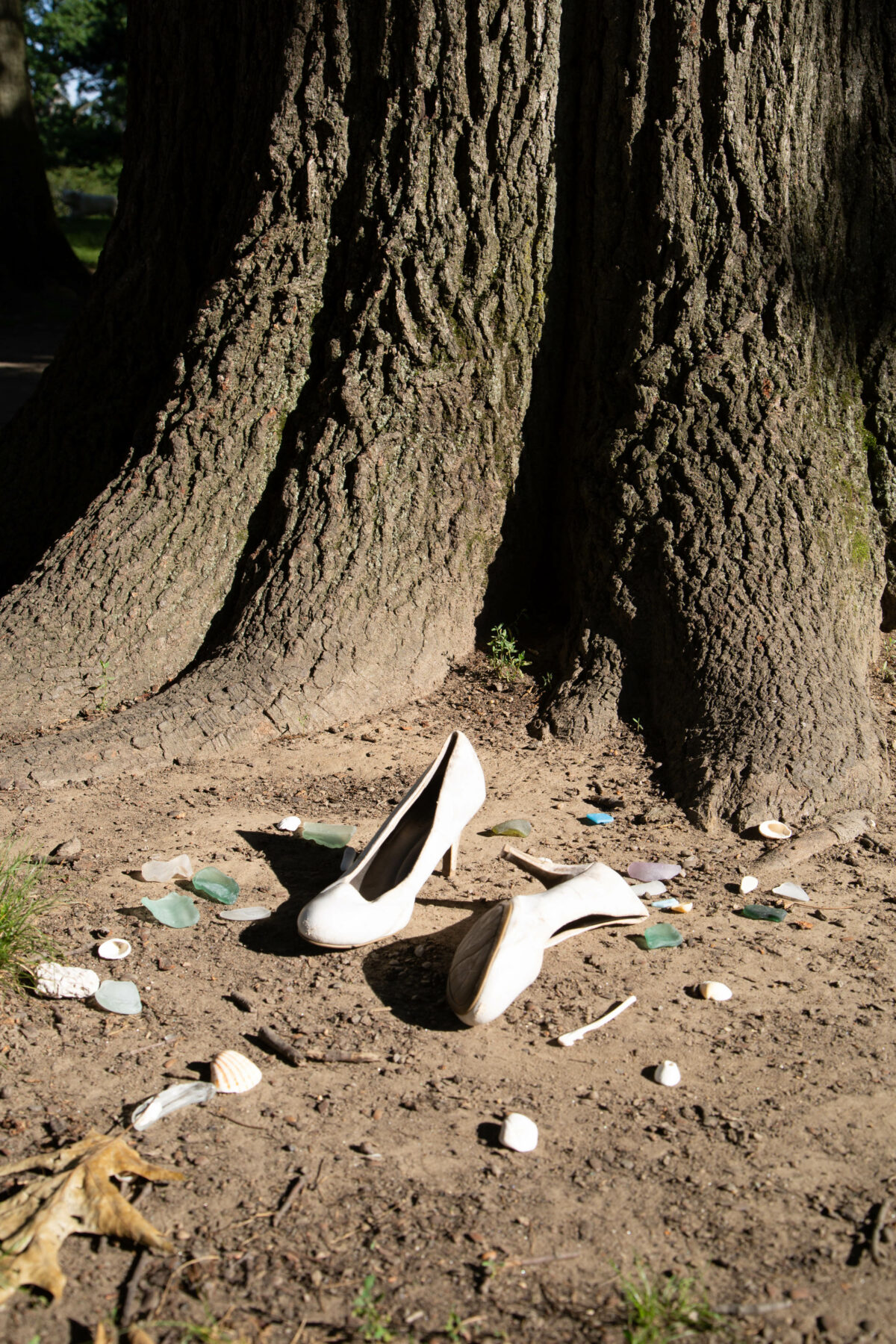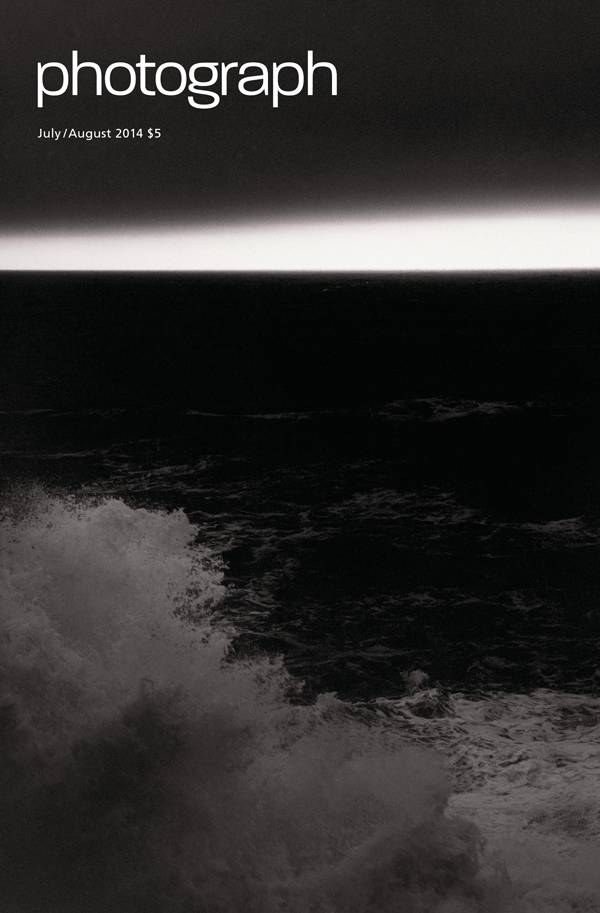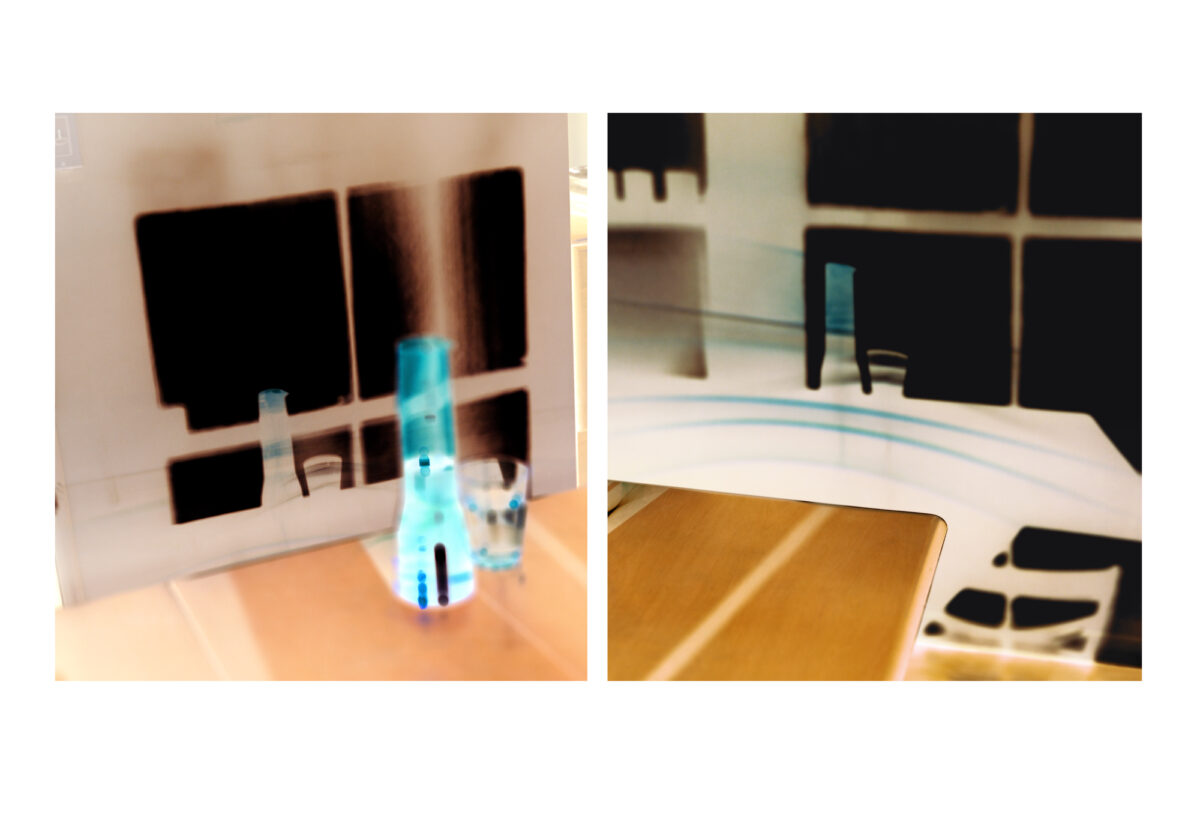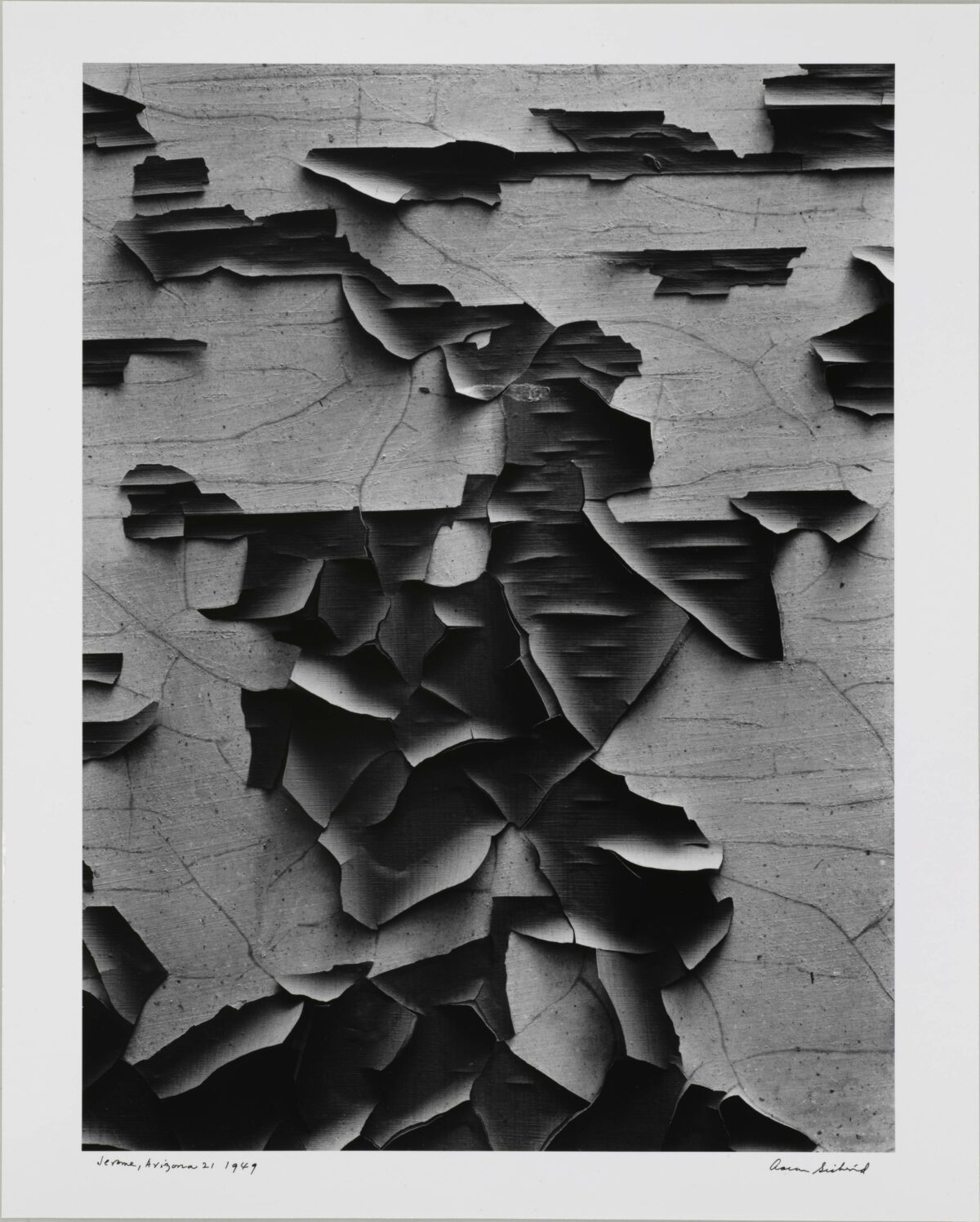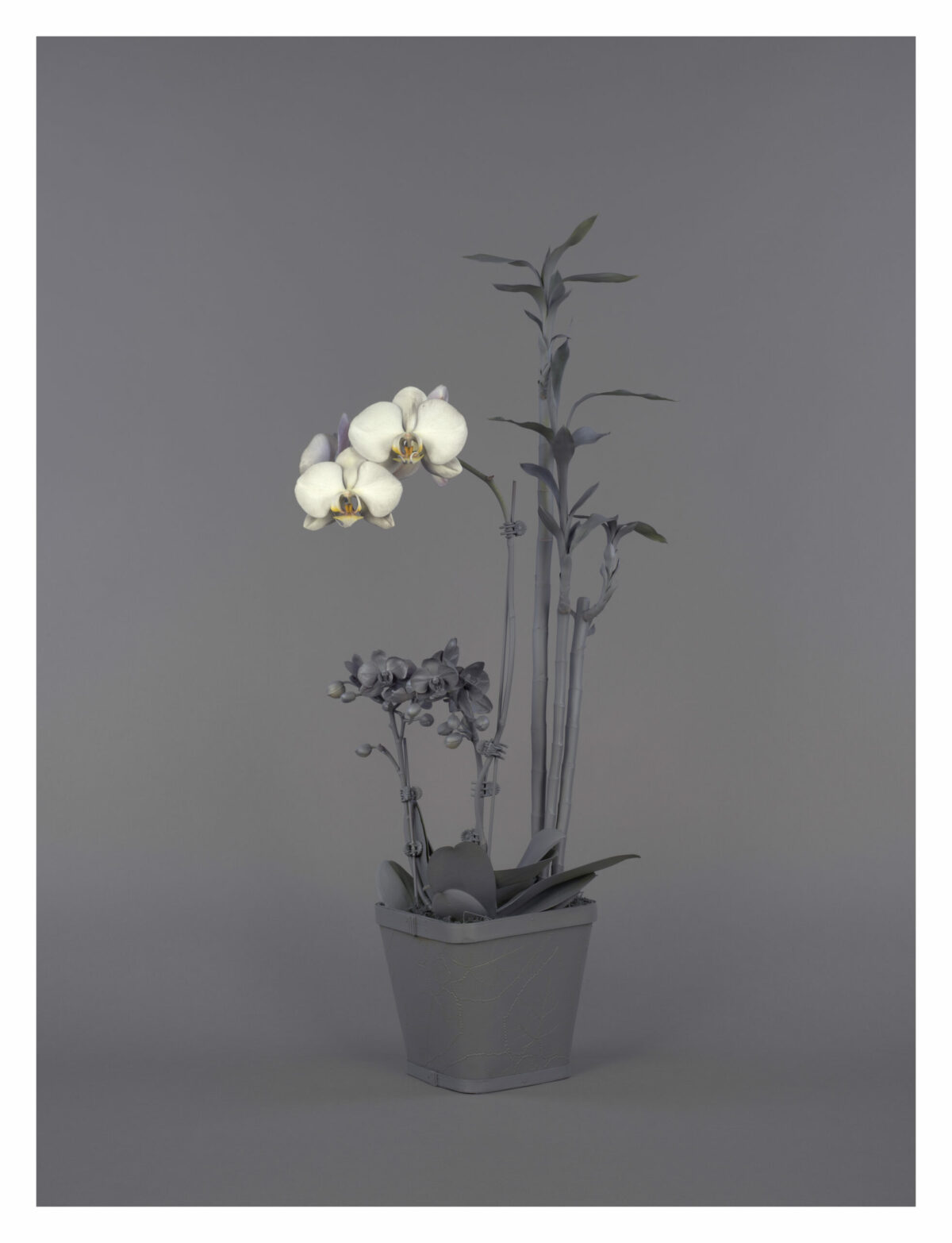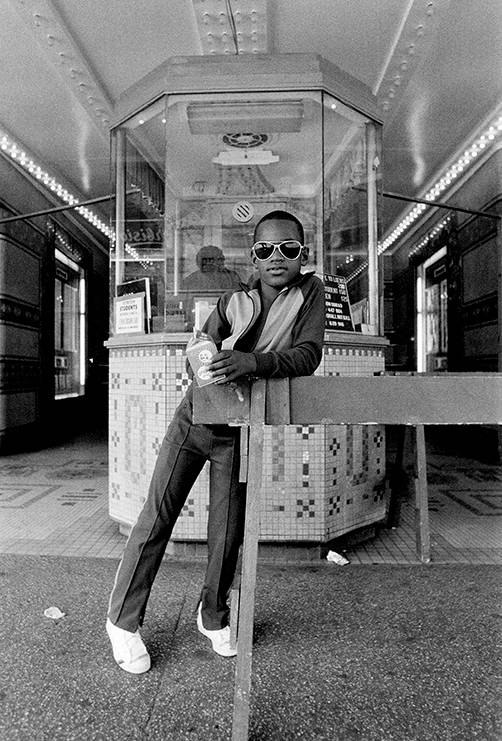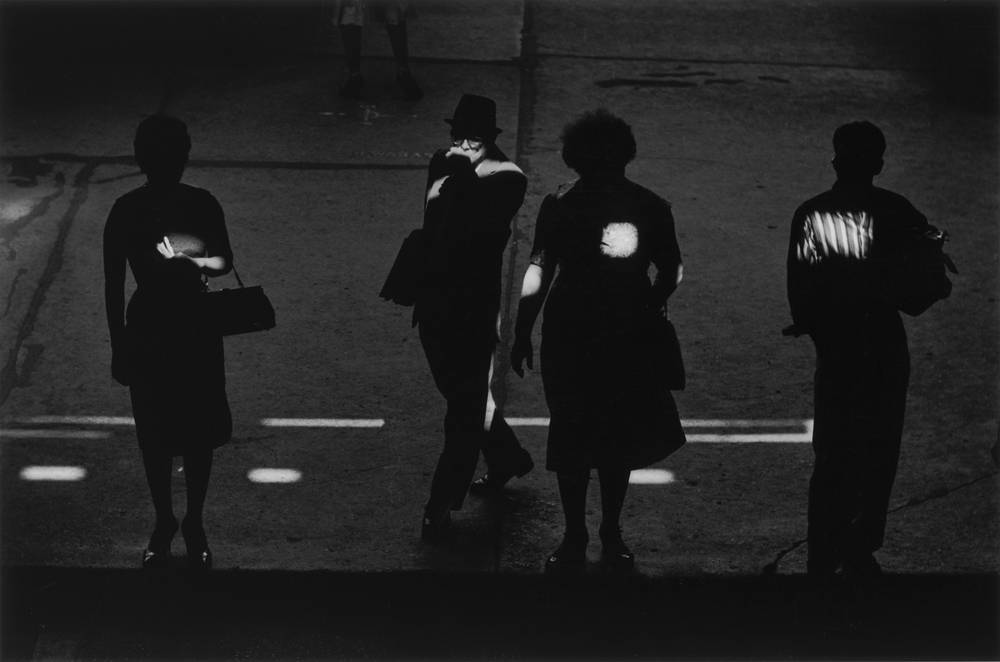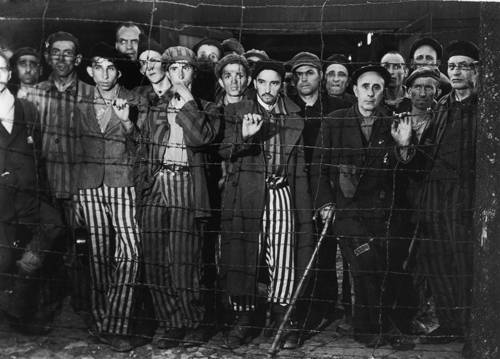

We asked Gillian Laub to tell us about a picture that means something to her, and why. A traveling exhibition of her series Southern Rites, organized by the International Center of Photography, is at Phillips Exeter Academy through December 15.
My studio is filled with images by other artists that I love, that inspire and sometimes haunt me. One photograph that I’ve had hanging next to my desk for the past 15 years is an image of Buchenwald survivors, made in 1945 by Margaret Bourke-White. When I first saw this image many years ago, I was throttled. I understood for the first time what it truly meant to bear witness; and, as a photographer, to provide that opportunity to society. I looked at the face of each man staring into the void and felt their terror. Their resilience filled me with pride. I burned inside with the hope that capturing their existence would reveal the atrocity to those who turned away and were thus complicit in the horror. A half century after the image was taken, there I was crying, feeling so much and so deeply. That is what I think some of the best photographs can do.
Margaret Bourke-White was the first female photographer hired by LIFE magazine in 1936 and the first woman to be allowed to work in combat zones during World War ll. So both the content and the maker of this image are historic and meaningful to me. She said of the experience of accompanying General George Patton’s Third Army as it marched through a destroyed Germany in 1945, “Using the camera was almost a relief; it interposed a slight barrier between myself and the white horror in front of me…I longed for it to disappear because while it was there I was reminded that men actually had done this thing – men with arms and legs and eyes and hearts not so very unlike our own.” Someone once asked me why I would want to look at something so morbid every day. I said, ‘Because I never want to forget my history, and I always want to be reminded of human tenacity.”


